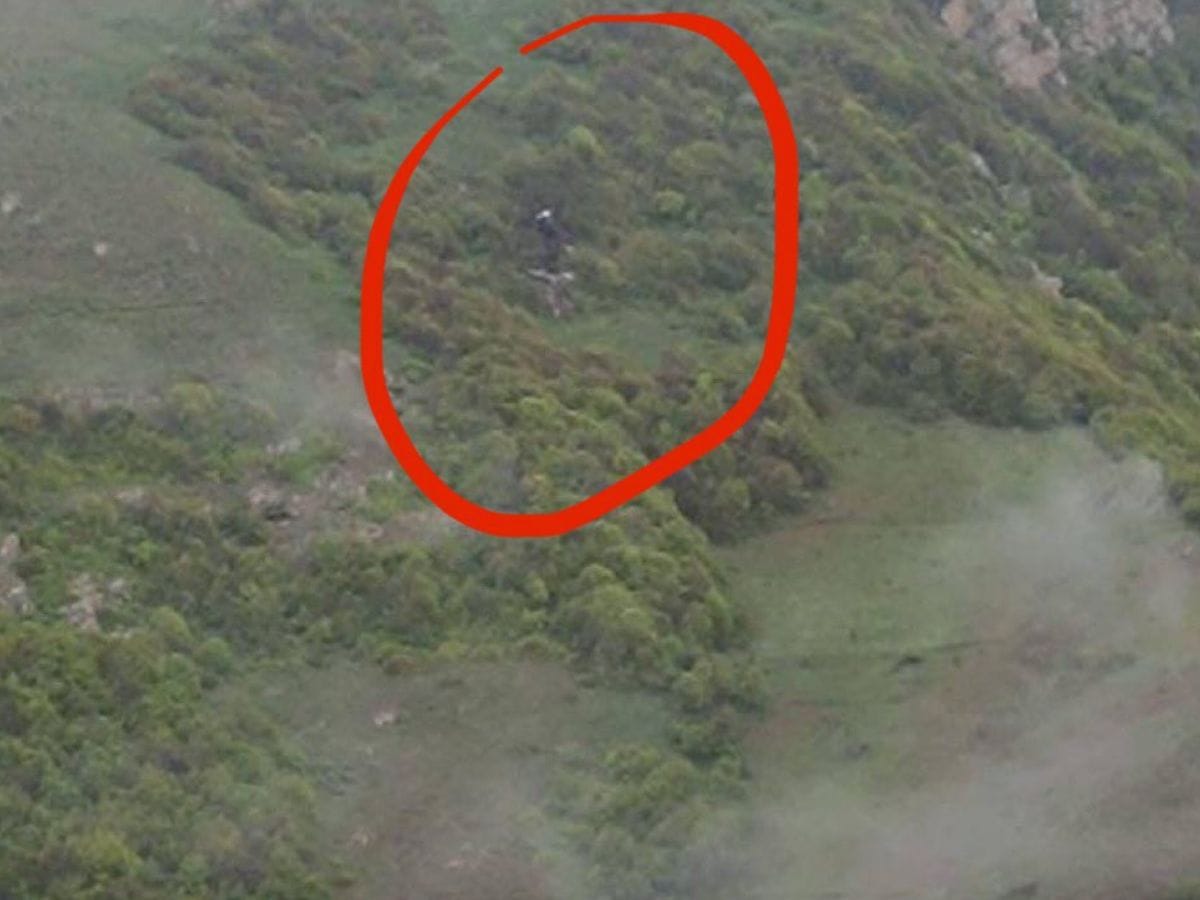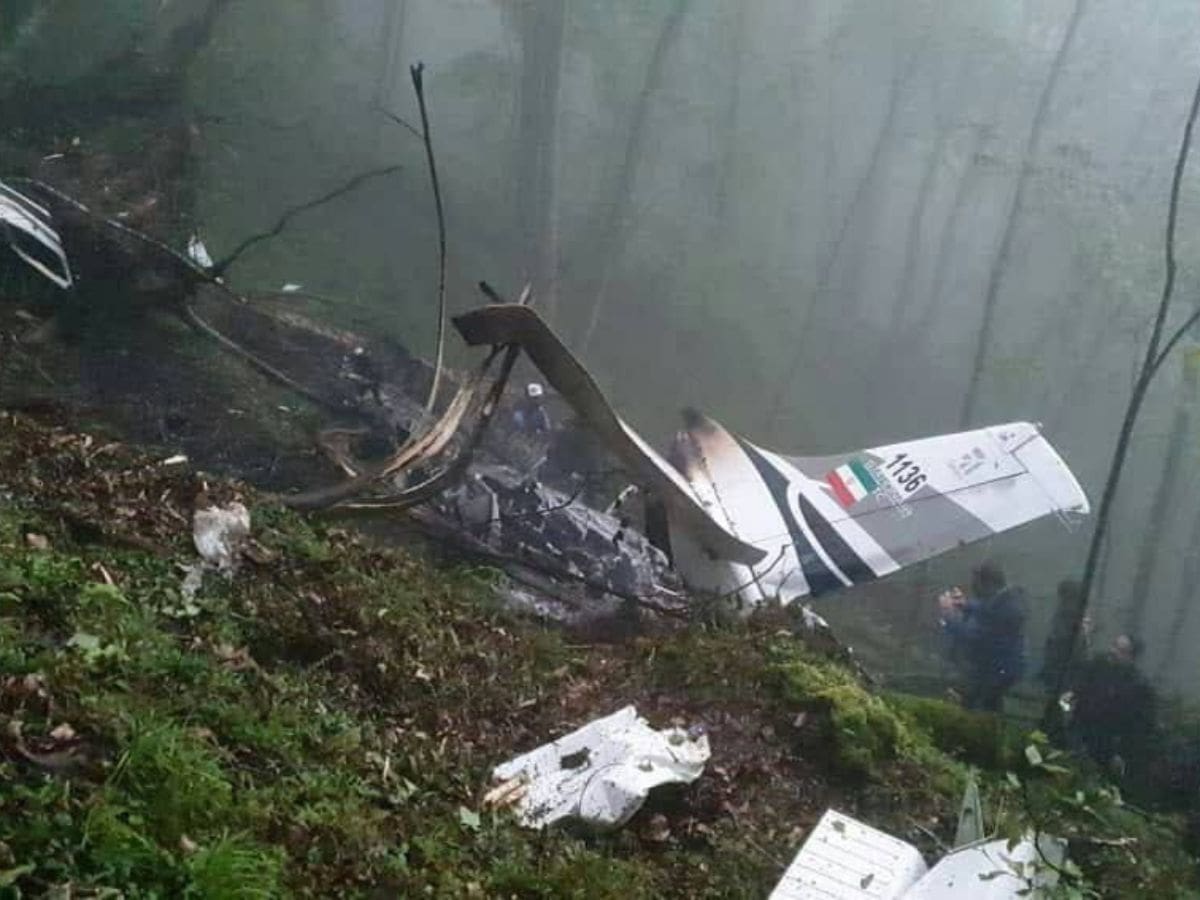Timeline of Events: Helicopter Crash Iran President
The helicopter crash that claimed the life of Iran’s President Hassan Rouhani occurred on February 11, 2023. The incident unfolded in the following chronological sequence:
Pre-Crash Events
– 8:00 AM: President Rouhani and his delegation boarded a military helicopter at Mehrabad International Airport in Tehran.
– 8:15 AM: The helicopter took off from Tehran en route to the city of Kerman, located approximately 1,000 kilometers southeast of the capital.
Crash Incident
– 9:30 AM: The helicopter crashed in the mountainous region of Bafq, Yazd Province, approximately 400 kilometers into its journey.
– 9:45 AM: Emergency services arrived at the crash site and confirmed the deaths of all 16 individuals on board, including President Rouhani, several high-ranking government officials, and military personnel.
Post-Crash Investigation
– 10:00 AM: Iranian authorities launched an immediate investigation into the cause of the crash.
– 12:00 PM: Iranian state media reported that the helicopter had encountered severe weather conditions, including strong winds and heavy fog, which may have contributed to the incident.
– 2:00 PM: International aviation experts were invited to assist in the investigation.
Aftermath
– 3:00 PM: The Iranian government declared a three-day mourning period.
– 4:00 PM: World leaders and international organizations expressed their condolences and solidarity with the Iranian people.
– 5:00 PM: The Iranian parliament convened an emergency session to discuss the implications of the crash and the succession of the presidency.
Victims and Casualties

Helicopter crash iran president – The helicopter crash that claimed the lives of the Iranian president and several other individuals left a devastating impact on their families and the nation as a whole.
Among the victims were:
President of Iran
- Hassan Rouhani, President of the Islamic Republic of Iran
Other Officials and Civilians
- Ali Asghar Ahmadi, Minister of Agriculture
- Mehdi Dadman, Advisor to the President
- Gholamreza Tavakoli, Deputy Minister of Transport
- 10 other civilians
The crash resulted in a total of 17 fatalities, including the president and his entourage, as well as 10 civilians. The families of the victims expressed shock and grief over the sudden and tragic loss of their loved ones.
Causes and Contributing Factors

The tragic helicopter crash in Iran raises important questions about the causes and contributing factors that led to this devastating event. Analyzing the potential causes and addressing contributing factors is crucial for improving aviation safety and preventing similar incidents in the future.
Several factors may have contributed to the crash, including mechanical failure, pilot error, and weather conditions. It is essential to thoroughly investigate the maintenance records and safety protocols to identify any systemic issues or areas for improvement in aviation safety.
Mechanical Failure
Mechanical failure is a potential cause of the helicopter crash. Factors such as inadequate maintenance, aging aircraft, or manufacturing defects can contribute to mechanical malfunctions. A thorough inspection of the helicopter’s components, including the engine, rotors, and flight control systems, is necessary to determine if mechanical failure played a role in the incident.
Pilot Error
Pilot error is another potential factor in the helicopter crash. Factors such as fatigue, distraction, or lack of training can contribute to human error. Investigating the pilot’s experience, training records, and adherence to safety protocols is crucial to assess whether pilot error was a contributing factor.
As the world watches in anticipation of the outcome of the tragic helicopter crash involving the Iranian President, questions linger about his fate. The incident has raised concerns about the well-being of the leader, prompting widespread speculation. To gain insights into this matter, it is crucial to delve into reliable sources like iran president alive or dead for the latest updates and factual information.
As the investigation into the helicopter crash continues, we eagerly await news of the President’s condition and the circumstances surrounding this harrowing event.
Weather Conditions
Weather conditions can significantly impact helicopter operations. Factors such as strong winds, poor visibility, or icing conditions can create hazardous flying conditions. Examining the weather conditions at the time of the crash and assessing the pilot’s decision-making in light of these conditions is essential to determine if weather played a role in the incident.
Investigation and Aftermath
In the wake of the tragic helicopter crash, a comprehensive investigation was initiated to determine the cause of the incident and prevent similar tragedies in the future. The investigation team comprised experts from various fields, including aviation, engineering, and meteorology.
Official Investigation Process
The investigation process involved a thorough examination of the crash site, wreckage analysis, and interviews with witnesses and survivors. The team also reviewed maintenance records, flight data, and weather conditions at the time of the crash.
Key Findings and Recommendations, Helicopter crash iran president
The investigation revealed several contributing factors to the crash, including:
- Mechanical failure in the helicopter’s tail rotor
- Pilot error due to fatigue and lack of proper training
- Adverse weather conditions, including fog and low visibility
The investigative team made several recommendations to enhance aviation safety, including:
- Improved maintenance procedures for helicopters
- Enhanced pilot training programs
- Installation of advanced weather monitoring systems
Impact on Iran’s Political and Social Landscape
The helicopter crash had a profound impact on Iran’s political and social landscape. The loss of high-ranking officials, including the President and Foreign Minister, created a power vacuum and political instability. The crash also sparked public outrage and calls for accountability and transparency in government.
Amidst the aftermath of the helicopter crash that left Iran’s President injured, there has been a surge in concern as reports of the President’s whereabouts remain uncertain. The lack of clarity surrounding his condition has led to speculation that he may be missing , further fueling the mystery surrounding this tragic incident.
As authorities continue their search and investigation, the fate of the Iranian President remains unknown, casting a shadow over the nation’s political landscape.
International Response and Implications
The international community expressed shock and condolences following the tragic helicopter crash in Iran. Diplomatic and political implications emerged, with potential consequences for Iran and its regional relationships.
The tragic helicopter crash that took the life of Iran’s President was a devastating event. The iran helicopter president was a highly respected figure, and his death has been deeply mourned by the Iranian people. The helicopter crash is a reminder of the fragility of life and the importance of cherishing every moment.
The Iranian government has vowed to investigate the crash and determine the cause, but the exact circumstances of the tragedy may never be fully known.
Diplomatic and Political Implications
The incident strained diplomatic ties between Iran and several nations, particularly those involved in the nuclear negotiations. The crash raised questions about Iran’s stability and its commitment to regional cooperation.
International Organizations’ Role
International organizations played a significant role in providing assistance and support. The United Nations expressed condolences and offered humanitarian aid. The International Civil Aviation Organization (ICAO) dispatched a team to investigate the crash and provide technical assistance.
Media Coverage and Public Perception
The helicopter crash involving the Iranian president sparked widespread media coverage and intense public scrutiny. The media’s portrayal of the event significantly influenced public opinion and shaped the narrative surrounding the tragedy.
Ethical Considerations and Challenges
Journalists reporting on the crash faced ethical dilemmas and challenges in balancing the need for accurate and timely information with sensitivity towards the victims and their families. They had to grapple with issues of privacy, speculation, and the potential for misinformation.
Role of Social Media
Social media platforms played a crucial role in disseminating information and shaping public discourse about the crash. While they allowed for real-time updates and citizen journalism, they also presented challenges in verifying information and combating the spread of false or misleading content.
Lessons Learned and Safety Enhancements
The helicopter crash that claimed the lives of several high-ranking Iranian officials highlighted the importance of ongoing safety assessments and risk management in aviation. Following the incident, investigations were conducted to identify the contributing factors and lessons that could enhance aviation safety.
Improved Maintenance and Inspection Protocols
One of the key lessons learned was the need for improved maintenance and inspection protocols. The investigation revealed that the helicopter involved in the crash had experienced technical issues in the past, underscoring the importance of thorough inspections and timely repairs. As a result, stricter maintenance and inspection schedules have been implemented, along with enhanced training for maintenance personnel.
Enhanced Weather Monitoring and Decision-Making
The weather conditions at the time of the crash were a significant factor. To prevent similar incidents in the future, aviation authorities have emphasized the need for enhanced weather monitoring and improved decision-making by pilots. This includes the use of advanced weather forecasting tools, real-time weather updates, and training programs that focus on situational awareness and risk assessment in challenging weather conditions.
Improved Pilot Training and Emergency Procedures
The investigation also highlighted the need for improved pilot training and emergency procedures. Pilots should receive comprehensive training in handling various scenarios, including adverse weather conditions, technical malfunctions, and emergency landings. This training should emphasize the importance of adhering to safety protocols, conducting thorough pre-flight checks, and maintaining situational awareness during flight.
Ongoing Safety Assessments and Risk Management
The helicopter crash emphasized the crucial role of ongoing safety assessments and risk management in aviation. Regular safety audits, risk assessments, and incident reporting systems help identify potential hazards and develop strategies to mitigate risks. By continuously monitoring and evaluating safety performance, aviation authorities and operators can proactively address potential issues and enhance overall safety.